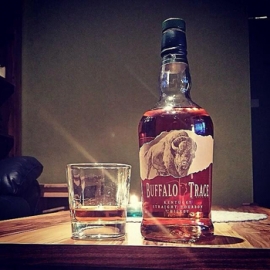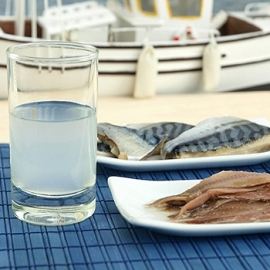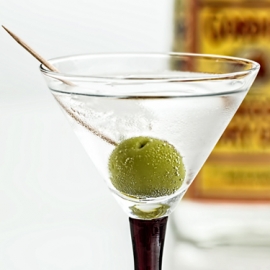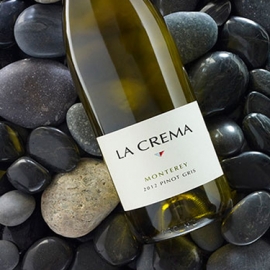Beautifully shaped spirits are making their way unto the palates of guests in drinks through a cocktail renaissance. Characteristics of liquors have broadened, competitive brands are growing, and establishments have seen a rise in demand for multi-step drinks.
When compiling a list of must-haves in your home, it's hard to keep it small. There are as many tastes to explore as many methods to employ. Of course, a debate will ensue on the proper way to mix cocktails, but one thing remains true when enjoying your beverage: make it to personal taste. After all, you're the one drinking it.
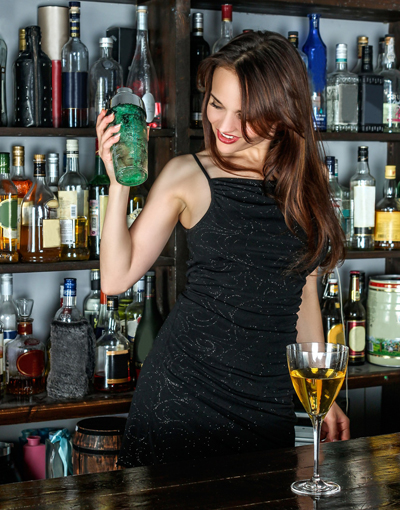 Say you're having guests over. Maybe coworkers are swinging by for a “we beat the budget” soiree. Perhaps your parents decide to come visit and stay at your house, encouraging more family to do the same and now it’s a party. Better yet, you finally landed that hot date with the beauty from the 3rd floor. You have many incentives to increase your mixology skills. Beverages promote relaxation and help with creating the ideal mood. Your entertainment level will rely on how you cater to guests through the cocktails you provide. Let them see you are the greatest likka emcee. These are five classic cocktails every host should have in their bartending arsenal and are sure to impress your guests.
Say you're having guests over. Maybe coworkers are swinging by for a “we beat the budget” soiree. Perhaps your parents decide to come visit and stay at your house, encouraging more family to do the same and now it’s a party. Better yet, you finally landed that hot date with the beauty from the 3rd floor. You have many incentives to increase your mixology skills. Beverages promote relaxation and help with creating the ideal mood. Your entertainment level will rely on how you cater to guests through the cocktails you provide. Let them see you are the greatest likka emcee. These are five classic cocktails every host should have in their bartending arsenal and are sure to impress your guests.
The Old Fashioned. The granddaddy of drinks. This cocktail is one of the originals. A simple cocktail which by its very nature became a standard of mixology. The ingredients included a liquor-- namely rye or bourbon whiskey-- bitters, sugar, and water. To make an old fashioned, first, muddle a sugar cube and a dash of bitters in flat water. Add whiskey, stir, and garnish with an orange peel or orange slice. Historically speaking, the drink made its way into bars and lounges in the early 1800s, but had a later resurgence in the late 1800s, in Kentucky, thereby being coined “Old Fashioned.” From there, Bourbon became its key ingredient, as that spirit was exclusively distilled in “the Bluegrass State.”
The Manhattan. This classic can go many ways. Traditionally a cocktail made with rye (and is best with rye), it is by most standards acceptable to use any bourbon or blended whiskey. The recipe calls for two parts whiskey, one part sweet vermouth, a dash or two of bitters, and a maraschino cherry garnish. Served chilled and straight up in a martini glass, but some prefer them on the rocks (the latter is ideal with one large ball of ice to maintain the integrity of flavor). While you may see bartenders shaking Manhattans, the more proper way is to stir briskly in one constant motion with a long-handled spoon, then strained into the glass.
 Variations of this cocktail include the Perfect -- when you split the vermouth into sweet and dry, or the Dry-- where dry vermouth is used in place of sweet. This sophisticated drink has made a comeback like no other, old and young patrons can be found sipping this pre-dinner libation, but rest assured, it is enjoyable at any time you choose.
Variations of this cocktail include the Perfect -- when you split the vermouth into sweet and dry, or the Dry-- where dry vermouth is used in place of sweet. This sophisticated drink has made a comeback like no other, old and young patrons can be found sipping this pre-dinner libation, but rest assured, it is enjoyable at any time you choose.
The Moscow Mule. Mules are cocktails made with ginger beer and lime juice. Traditionally served in copper mugs, which keep the liquid cold. The Moscow version is made with one part vodka (get it?), three parts of a spicy ginger beer, and a touch of lime juice with a lime garnish. Mules are diverse, as ginger beer pairs nicely with many liquors; a Mexican Mule would have tequila, and a Kentucky Mule would take Bourbon. What they all have in common is the awakening taste of ginger beer, combining the spirits with the healing powers of the root. This concoction is added to this list because of its versatility, and the medicinal properties of ginger; meaning it is pretty hard to suffer a hangover from it.
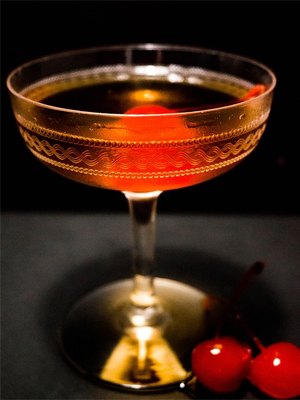 The Cosmopolitan. A cocktail of tinted red hue, this drink consists of vodka and a subtle mixture of triple sec, lime, and cranberry juices. Served chilled and straight up, it fills a martini glass with delicate citrus flavors. One must take care and not confuse this concoction with a simple vodka cranberry, as that drink comes in a much simpler and juice-heavy form. This drink, while may not fit the definition of classic, most definitely passes the litmus by being one which has been ordered and revered by millions of tasters. Its origin is clouded a bit, but by most experts, it has been credited to the expertise of Cheryl Cook in Miami, Florida. A cosmopolitan, affectionately called a cosmo, is made with 4 parts citrus vodka (when available, most use a choice of unflavored vodka), ⅓ equal parts of Cointreau or triple sec, lime, and cranberry. The key is to not overdo the cranberry juice. Keep in mind, it is a vodka cocktail and not a juice cocktail. In other words, the cranberry is to be used as a hint and not a major ingredient. Add ice, and shake heavily, i.e. bruising the mixture, straining it into a martini glass. Garnish with a lemon twist or lime wedge (or take the extra step and rim the glass with the juice of a fresh lime). It should appear vibrant and frothy. Trust me, fellas, your lady friends will love you when you present this beautiful cocktail to them!
The Cosmopolitan. A cocktail of tinted red hue, this drink consists of vodka and a subtle mixture of triple sec, lime, and cranberry juices. Served chilled and straight up, it fills a martini glass with delicate citrus flavors. One must take care and not confuse this concoction with a simple vodka cranberry, as that drink comes in a much simpler and juice-heavy form. This drink, while may not fit the definition of classic, most definitely passes the litmus by being one which has been ordered and revered by millions of tasters. Its origin is clouded a bit, but by most experts, it has been credited to the expertise of Cheryl Cook in Miami, Florida. A cosmopolitan, affectionately called a cosmo, is made with 4 parts citrus vodka (when available, most use a choice of unflavored vodka), ⅓ equal parts of Cointreau or triple sec, lime, and cranberry. The key is to not overdo the cranberry juice. Keep in mind, it is a vodka cocktail and not a juice cocktail. In other words, the cranberry is to be used as a hint and not a major ingredient. Add ice, and shake heavily, i.e. bruising the mixture, straining it into a martini glass. Garnish with a lemon twist or lime wedge (or take the extra step and rim the glass with the juice of a fresh lime). It should appear vibrant and frothy. Trust me, fellas, your lady friends will love you when you present this beautiful cocktail to them!
The Martini. Ahh, the Martini. Where to begin? Arguably the most complex of cocktails, mainly because of the many requests of variation. It is common to think this drink is the easiest to prepare, but when you consider people’s tastes, this concoction is made in so many different ways. There are gin lovers and there are vodka lovers. There are some who want it ice cold. There are some who appreciate the purity and uninterrupted nature of the liquor itself and require but a mere stir to mix the liquid. Some want it over ice in a lowball glass. Some prefer it straight up in the traditional martini stem. You can make them dry, sans vermouth, or you can add a minuscule amount of vermouth to the glass, pouring it off before you add the chilled vodka. (It is hard to believe there was a time when martinis were served at a two to one or even half and half gin to vermouth!) 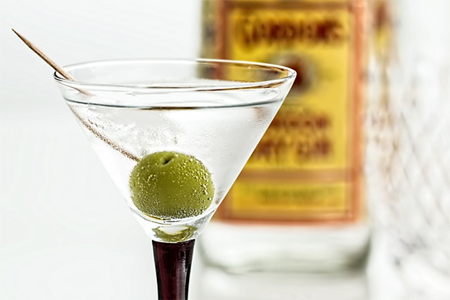 And, like the Manhattan, some will choose a perfect Martini, a mix of sweet and dry vermouth to compliment their cocktail. Some like theirs dirty, adding olive juice, some like theirs dirtier, making the mixer equal to the liquor. The garnish will vary, requests for lemon or lime twists, pearl onions (now you’re making a Gibson), one olive, two olives, three, Oh My!
And, like the Manhattan, some will choose a perfect Martini, a mix of sweet and dry vermouth to compliment their cocktail. Some like theirs dirty, adding olive juice, some like theirs dirtier, making the mixer equal to the liquor. The garnish will vary, requests for lemon or lime twists, pearl onions (now you’re making a Gibson), one olive, two olives, three, Oh My!
Instead of trying to discern all of those qualifiers now, we will go with the most basic recipe. A traditional contemporary Martini uses 4 parts dry gin and a dash of dry vermouth. By a “dash” is understood to pour a drop or two in a chilled glass, swirl it around, and toss the remainder. While vermouth was an integral part of cocktails early on, the use of it has severely waned over time. Add ice to the liquor and either shake or stir it to chill. Strain in a glass, and garnish with an olive or lemon twist. There it is, an inviting cocktail to soothe your guests!
You now have a strong starting point for where your mixing skills should lie. You are able to make a good and true drink for your friends and family. Whatever company you host, they will be in capable hands when they ask for a nice, stiff cocktail. Get to shaking, stirring, and straining and make your next party one to remember!
